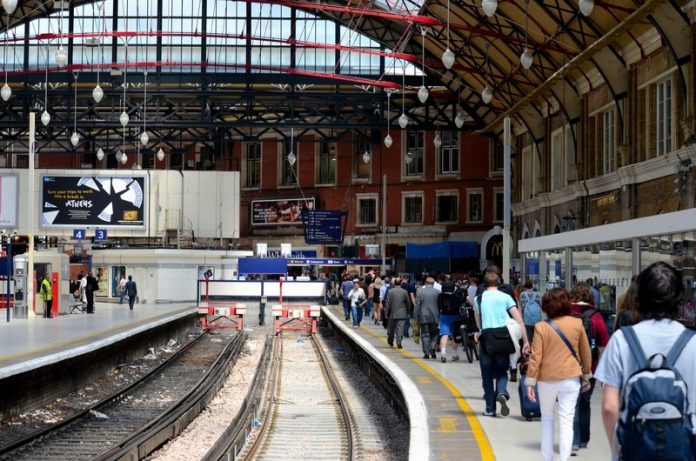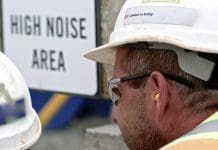Alistair Branch, Director at Stephen George + Partners architects, gives his advice on how the regeneration of “depressing” bus stations can have a knock-on effect on the community as a whole
Buses have never been the most romantic form of travel. We’re unlikely to see Michael Portillo’s Great Coach Journeys on our TV screens any time soon; nor did Agatha Christie pen Murder on the National Express.
Perhaps the biggest reason for bus travel’s dreary reputation is that coach stations are such depressing places. Consider the great cathedrals of rail travel: Brunel’s soaring ironwork at Paddington, or the magnificent new shed for the Eurostar at St Pancras. Compare these palaces of transportation to, say, Victoria Coach Station, where luckless travellers are forced to wait in a poorly-lit, shop-less, sterile environment.
But where bus travel suffers most is the fact that coach stations are often located in depressed, dilapidated areas of town. The sins of 1950s and 1960s town planning are most evident in our nation’s bus stations. The grim poverty of the architecture; the wide, windswept and litter-strewn concourses, long aisles of metal clad, door-less shelters – they all contribute to these hubs becoming a beacon for petty vandalism and vagrancy; even worse, this aura seems to ooze out into the surrounding area.
Bus stations often became hidden under car parks and retail structures with an apparent focus more on vehicles than the users – one thinks of Rochdale, Haymarket Newcastle, Broadmarsh Nottingham and Northampton bus stations – but Transport Authorities and Councils are coming together to successfully reimagine these key regional transport hubs, so central to wider town centre visions, and bringing them out of darkness and into the light.

If we’re serious about urban regeneration, we should look at bus stations as a hub around which we can build a wider renewal. It’s well-known that re-imagining transport hubs is one of the best catalysts for regeneration – and not just in terms of improving the local architecture. The transformation of King’s Cross from a district with a shady reputation, frequented by drug dealers and prostitutes, is in large part the result of the rebuilding of large sections of Somers Town, and the fact that it is now the arrivals hall for train travellers from across the continent.
There is no reason why the same can’t be true, albeit on a somewhat smaller scale, for bus stations. In fact, regenerating a neglected bus station doesn’t simply promise economic improvement and employment opportunities, but can provide a powerful boost to social regeneration.
Depressed areas are a magnet for crime and anti-social behaviour. Quality transport hubs can provide a positive contribution to the built environment, creating spaces that enrich people’s lives. By designing a place that people want to visit – rather than having to – we can create positive spaces for people to meet, and places that are hubs for businesses or cultural activity.
That’s all very well; but how do we actually approach these modernisation schemes?
First, we must focus on the journey. Bus stations are the gateways to towns and cities and provide one’s first impression. This journey should be seamless with a focus on sensitive urban planning. Good masterplanning and design should enhance connectivity with the bus stations environs and retail destinations while providing a clear and safe segregation between buses and pedestrians.
Next, we need to consider questions of access and inclusion, ensuring that wherever possible we remove physical barriers and enhance visual, audio and tactile information. Good signage, information points and wayfinding can make all the difference to the passenger journey for everybody, but especially for those who have difficulties using public transportation. By engaging with local access groups from the earliest design stages, we can provide the right facilities to make everyone feel safe, welcome and comfortable.
Safety and security is also a key priority for our transportation clients, their passengers and operators. Active and passive security features can minimise antisocial behaviour and enhance public amenity and comfort; and this requires close cooperation with the local police and council from the very beginning of any project.
Similarly, we need to think about conservation and sustainability, and consider the environmental and indeed historical impact of the buildings we create, as well as the effects of increased traffic in the area. Putting sustainability at the heart of any new transport hub such as a coach station is key to nurturing the social and environmental benefits that these projects should bring. The green credentials of a modern bus station should reinforce the message that public transport is a more sustainable mode than personal vehicles, and support the move by operators to a greener fleet.
Above all, we must ensure we make these hubs destinations in their own right. Shops and amenities give people an incentive to come to the area, as do easy interchanges (including, of course, disabled access) with other transport modes. They should also consider connectivity of a different kind, ensuring that the local area has access to high-speed broadband, on which so many passenger and business services will rely. All this has the triple benefit of giving waiting passengers something to do, attracting more footfall into the area, and creating economic opportunities that will, in turn, power the renaissance of an old, run-down part of town.
Local authorities are beginning to see the value of providing a high-quality transport environment, and realising that investment in infrastructure hubs has a powerful “force multiplier” effect on the local community. What does every council or Chamber of Commerce want but for the local town to become a magnet for visitors and investment, and for it to become a worthwhile destination in its own right?
None of this is to say that bus journeys will suddenly become as romantic and iconic as, say the Ghan or the Blue Train. Yet investing in bus stations can make this cheap and efficient form of transport a much more pleasant experience, encouraging more passengers to linger, more travellers to arrive, and more homes and businesses to cluster around these hubs of urban renewal.

Alistair Branch
Director & Head of Transport
Stephen George & Partners LLP
http://www.stephengeorge.co.uk/
Twitter: @sgpLLP

















